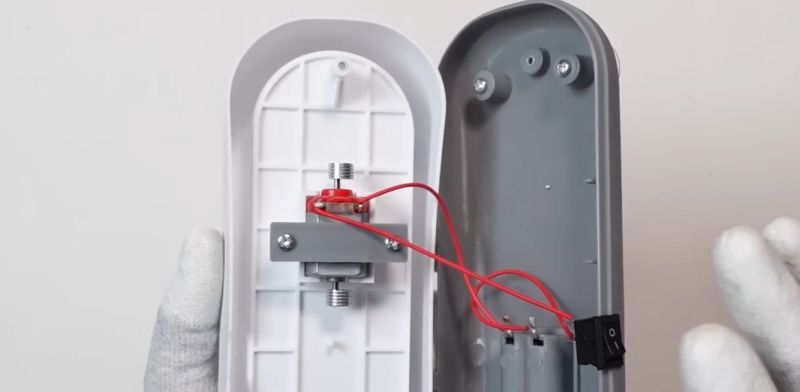Everyone knows that ultrasonic cleaners are great, but not every device that’s marketed as an ultrasonic cleaner is necessarily such a device. In a recent video on the Cheap & Cheerful YouTube channel the difference is explored, starting with a teardown of a fake one. The first hint comes with the use of the description ‘Multifunction cleaner’ on the packaging, and the second in the form of it being powered by two AAA batteries.
Unsurprisingly, inside you find not the ultrasonic transducer that you’d expect to find in an actual ultrasonic cleaner, but rather a vibration motor. In the demonstration prior to the teardown you can see that although the device makes a similar annoying buzzing noise, it’s very different. Subsequently the video looks at a small ultrasonic cleaner and compares the two.
Among the obvious differences are that the ultrasonic cleaner is made out of metal and AC-powered, and does a much better job at cleaning things like rusty parts. The annoying thing is that although the cleaners with a vibration motor will also clean things, they rely on agitating the water in a far less aggressive way than the ultrasonic cleaner, so marketing them as something which they’re not is very unpleasant.
In the video the argument is also made that you do not want to clean PCBs with an ultrasonic cleaner, but we think that people here may have different views on that aspect.
















TMI Greg.
When a product looks too good to be true, it most likely is, especially if it’s cheap and made in China.
Taking it apart to prove it’s true is a waste of time, even if it’s fun !
I’ve seen quite a few of these devices on Temu etc. too cheap to be true, but taking a recommendation from that video, I’ve ordered an ultrasonic cleaner for under £20 from the AliExpress shop he recommends, that would seem to disprove the too cheap to be true rule ¯_(ツ)_/¯
Those little cheap ones works fine, the ones with a metal bowl at least.
Don’t keep pushing the “Start” button, it’ll burn out the transducer. Luckily they’re also cheap and cam be gotten from the same place you got the cleaner. They’re epoxied on though, so best not to burn them out in the first place.
I have a high end commercial ultrasonic cleaner at work and a very nice off brand one at home. I’ve come to the conclusion that what they can do is highly over-rated. The do a mediocre job of cleaning flux off of board and neither one can clean off dirt or contaminants that the boards pick up in field use. If there’s anyone that does these things successfully with an ultrasonic cleaner, please let me know how it’s accomplished and what is used for a cleaning solution.
I really miss the vapor cleaning tank that my university had (before CFCs were banned).
Check out the Musty1 YouTube channel — He uses an ultrasonic cleaner and a specific automotive cleaning fluid (don’t remember which one it is) in it for cleaning carburetors.
Mend It Mark has a video about ultrasonic PCB cleaning.
https://www.youtube.com/watch?v=z9SUl-LTRzg
Thanks. Watched that one and he’s not working on industrial filth. We use Branson EC, but I might try Elma Tec Clean S1. Branson works great for flux removal on newly built boards, but not too well on seriously dirty or corroded boards.
I have one with a plastic tub. It’s legit. This guy is wrong.
Are you sure? Ultrasonic transducers tend not to work too well on plastic.
I’ve never seem a plastic lined ultrasonic cleaner, possible I guess.
Maybe the guy talks about this in the video, but I’m curious what the actual difference between a true ultrasonic cleaner and a cheap $10 USB-powered ERM-driven ‘sonic’ cleaner is for applications X, Y, and Z. I bought one of the latter a couple months ago and used it to save a couple technical pen nibs that go for between $20 and $80 (and that’s used — you can’t get them new), so I feel like I got my money’s worth!